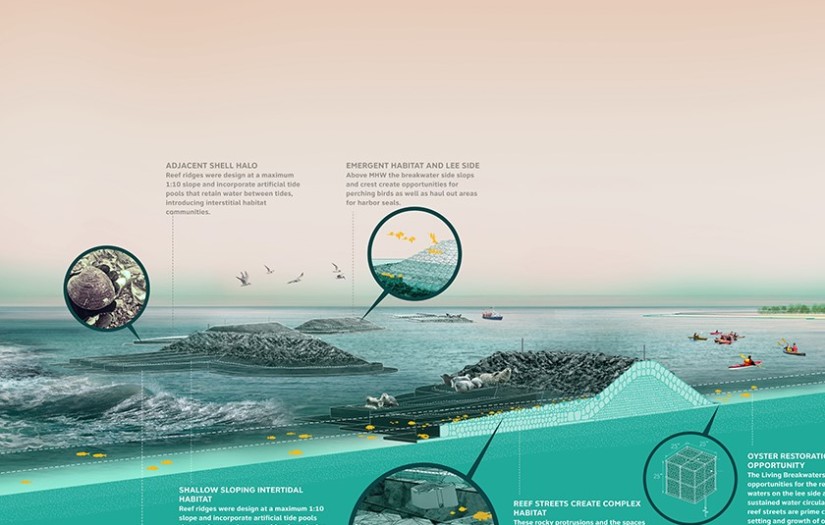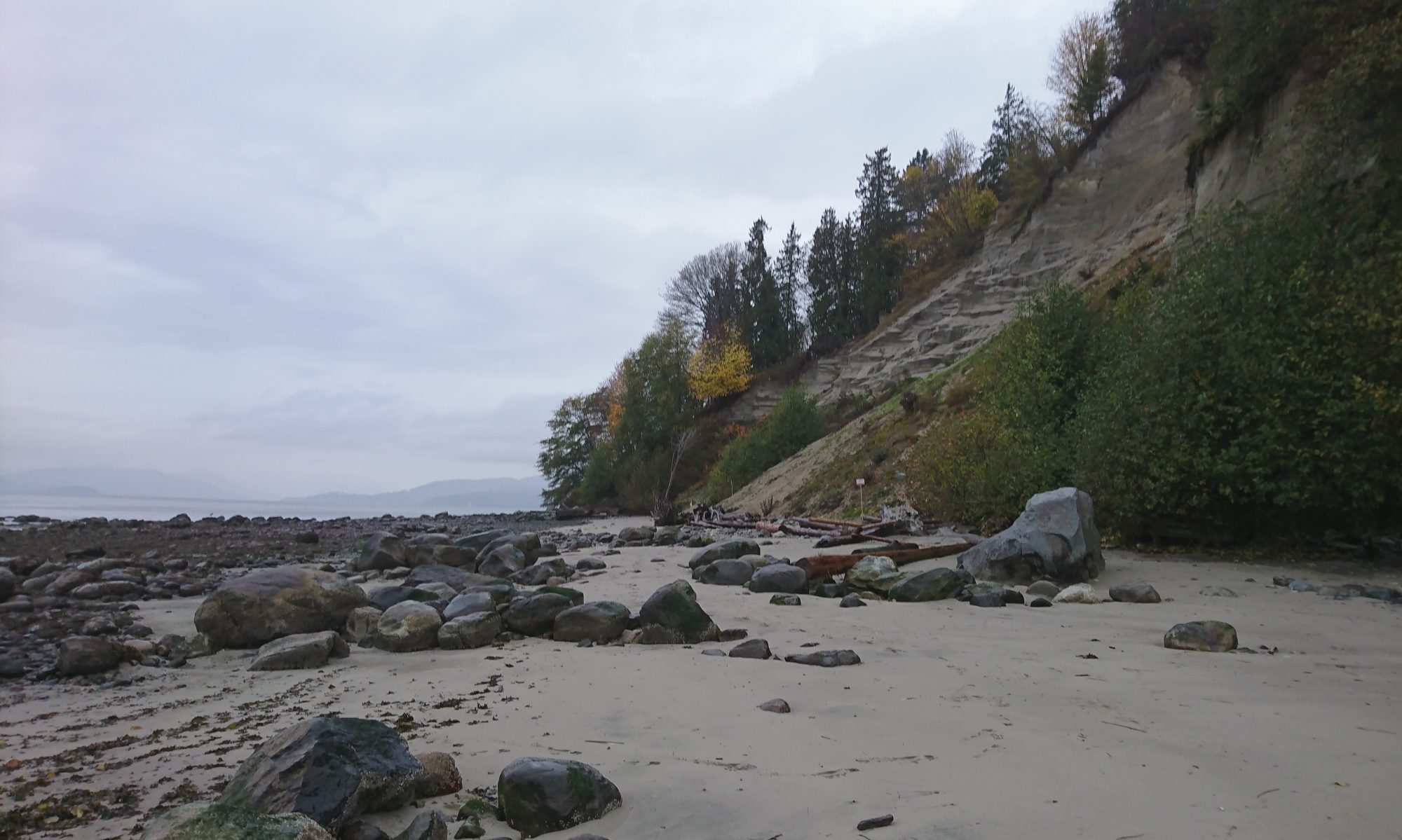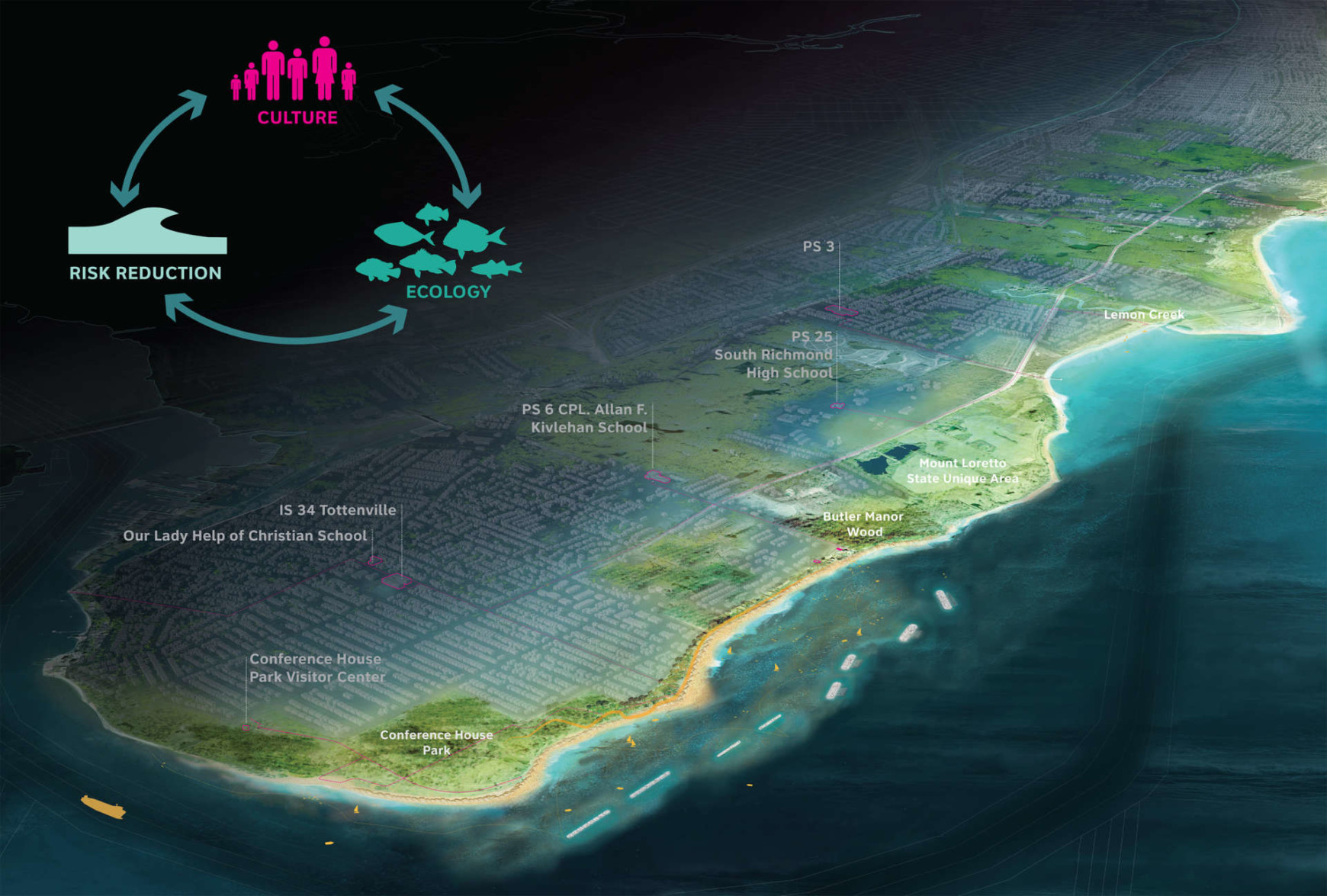

Living Breakwaters – which took lessons from Louisiana, where oyster reefs have been installed in lakes and bayous for over a century – presented an opportunity to test out nature-based defenses hundreds of feet off the coast of America’s largest city. To find those projects, Shaun Donovan, who led the federal government’s long-term Sandy recovery and was then the secretary of the United States Department of Housing and Urban Development (Hud), said the agency launched a competition called Rebuild by Design, inspired by efforts in Amsterdam to bolster its considerable gray infrastructure apparatus through nature-based solutions to high-water management. But some wondered how green infrastructure solutions, which are inherently regenerative and thus considered cost effective compared with more traditional projects, could help.
LIVING BREAKWATERS SERIES
Last year, New York started construction on a $1.4bn project to bolster defenses on Manhattan’s east side through a series of raised parklands, floodwalls, berms and movable gates. In response to Sandy, the local and federal government poured money into fortifying the coast. A total nightmare.”Īerial views of Staten Island destroyed by Hurricane Sandy, in November 2012. “The only thing that was left was the front steps and the hole for the basement,” said Spero. Gerard Spero lost his brother-in-law and 13-year-old niece, George and Angela Dresch, in the storm, which ripped their house off its foundation. Twenty-four people died in Staten Island during the storm, including two in Tottenville, the neighborhood where Living Breakwaters is being constructed. The storm, a massive event that affected 24 states, caused an estimated $19bn in damage and killed 44 people in New York City alone. Sandy ripped into the New York metro area just under a decade ago, pushing swells not only on to the streets of lower Manhattan – where neighborhoods went dark for days amid the flooding – but also straight into Staten Island, where single-family homes are built right up on the water. They are also efficient water filters – a single oyster can filter as much as 50 gallons of water a day, sucking out pollution and excess nutrients, and enhancing water quality. When attached to rocks and other structures in water, the bivalves can help make them resilient to pounding waves.


The project is premised on the idea that adequately meeting the challenges of climate change-induced sea level rise and increasingly vicious storms requires building with nature, not just alongside or against it.Ī 19th-century illustration of the Staten Island oyster industry.īuilding with oysters is an example of this so-called green infrastructure approach. It is the product of seven years of planning, permitting and testing that was started in the wake of Superstorm Sandy, a devastating storm in 2012 that leveled homes, tore up boardwalks and spurred a federal funding windfall to rebuild, with Congress allocating $17bn for New York City alone. Living Breakwaters broke ground in September, installing bedding stone and marine mattresses on the seafloor off Staten Island. We have to foreground the notion of rebuilding natural systems right now otherwise we will not have this bridge to the future.” “But that background is no longer there, it’s in a state of collapse. “We have been living in this world where nature has existed sort of as a backdrop,” said landscape architect Kate Orff, whose design firm Scape conceived of the Living Breakwaters project. Once a staple of the Lenape people’s diet, oysters led European visitors later to write home in wonder of their quality, and colonizers turned them into a major industry – ultimately devastating local oyster populations through pollution and overconsumption. Instead, the project is designed to protect the city by harnessing the power of the very natural systems that have been all but destroyed by environmental degradation – and reviving them in the process.įor thousands of years, oysters played a special role in the story of New York. It is a departure from so-called gray infrastructure like dikes, seawalls and dams – the tools that largely define New York’s efforts to control flooding. In a sense, Living Breakwaters is an attempt to reimagine the relationship between humans and nature in one of the world’s most heavily engineered harbors. An oyster at Grand Army, a Brooklyn restaurant partnering with the Billion Oyster Project.


 0 kommentar(er)
0 kommentar(er)
